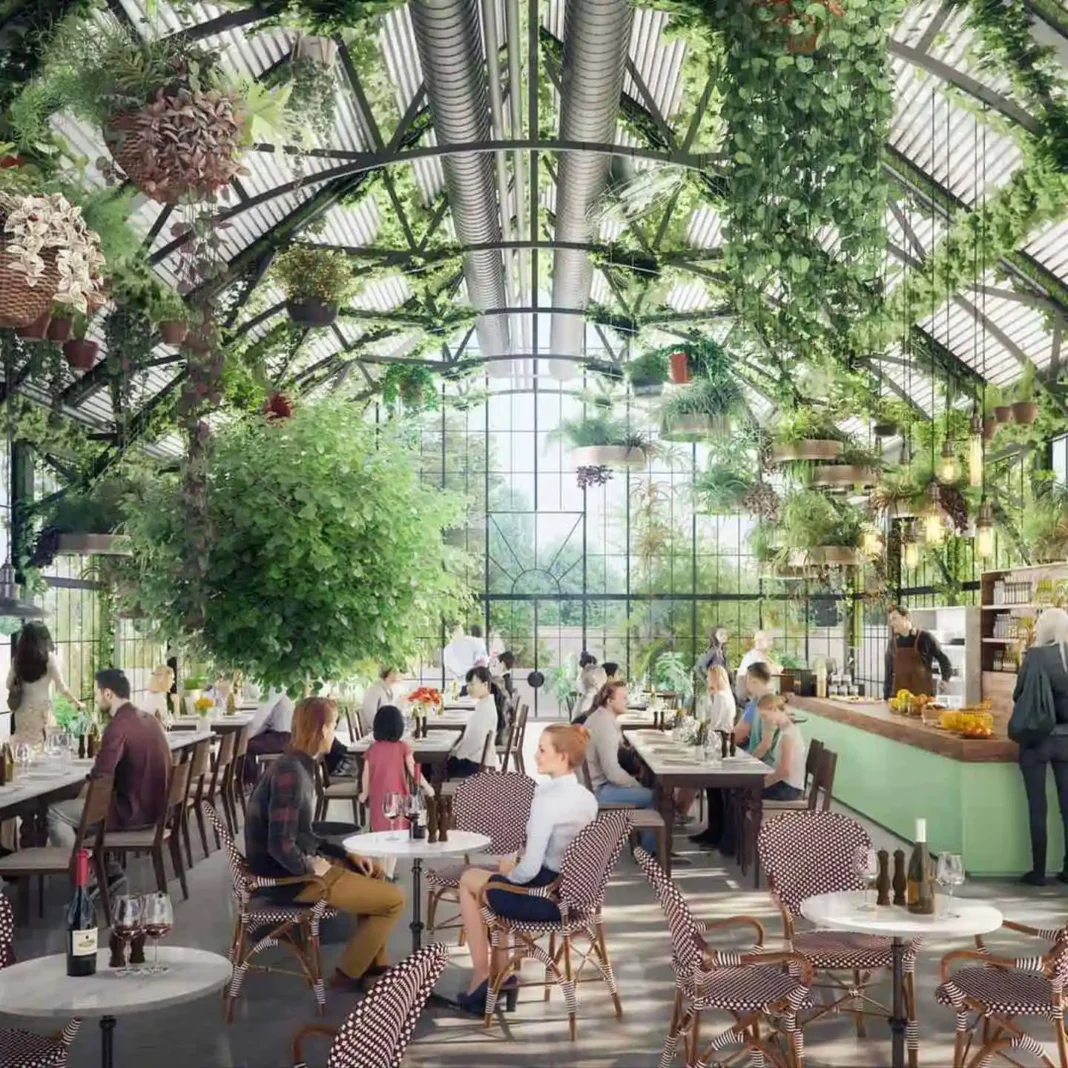What Defines a Green Restaurant? From Food Production to Menu Design
By Beth Rush
The food sector is a notorious environmental polluter. When leading a sustainable lifestyle, starting with what you eat makes sense. The good news is that fast food joints, luncheonettes, diners, bistros, cafes, bars, pop-ups, food trucks, pizzerias, chophouses, ice cream parlors, concession stands, and ghost kitchens are embracing sustainability. However, the bad news is many restaurants are just greenwashing.
Many eateries project an environmentally responsible public image but secretly commit to ungreen practices. Do you want to know how to tell if a restaurant is sustainable? Learn to distinguish the establishments that genuinely care about the planet from the fraudsters by understanding what a green restaurant truly is.
What Is a Green Restaurant?
Green restaurants make honest-to-goodness efforts to reduce their negative environmental impact. Going sustainable is challenging because restaurateurs must swim upstream to reduce their direct and indirect carbon footprints, minimize waste, help conserve virgin resources, and mitigate pollution.
No operation is 100% green. It’s impossible to be sustainable by any measure when the infrastructure underpinning all eco-friendly business practices hasn’t matured yet. Still, green restaurants strive to be part of the solution and help build a sustainable economy that drives profits without harming the planet’s health.
How to Tell if a Restaurant Is Sustainable — 7 Factors
Half the battle is understanding what a green restaurant is. The other is knowing whether a food establishment is sustainable. Environmental responsibility is in fashion, so most restaurateurs claim to be eco-warrior allies. Sadly, much of green marketing is smoke and mirrors.
Size up eateries using these seven criteria to determine if they’re sustainable.
Menu
The menu speaks volumes about a restaurant’s food waste. Offering fewer items compels consumers to order just the right amount they can finish. Having too many options tests guests’ self-control, enticing them to buy more than they can handle. Although many businesses do this intentionally to generate more revenue, green ones deviate from this practice to cut waste.
Portion size is another cause for concern. The Waste and Resources Action Programme, a British climate action nongovernmental organization, found that 48% of restaurant guests leave food on their plates because the standard portions are too large, which is the case for main courses 15% of the time.
Serving oversized portions is wasteful and costly. Discerning, green-minded restaurateurs limit their food offerings to what patrons can eat in one sitting and offer upsize options for those with bigger appetites.
Ingredient Sourcing
Environmentally conscious establishments buy local and incorporate seasonal produce into their menus instead of importing goods. Supporting domestic farmers and ranchers championing organic agricultural practices is a win for the planet and the palate. Organic ingredients enhance the flavor profiles of avocado toast and other breakfast staples, brunch favorites, such as huevos rancheros, omelets, and eggs Benedict, and classic dinner choices, like the rib-eye steak.
Some restaurants take it up a notch and maintain gardens. Growing fresh vegetables, fruits, herbs, and spices in-house and turning them into sauces and dressings is sustainable. Such harvests need less packaging and consume less energy to transport.
Circularity
Circular food spots are allergic to single-use plastic. They advocate for reusable items and encourage customers to bring tumblers to reduce the usage of disposable cups.
When buying furniture, green-minded restaurateurs favor used, refurbished, remanufactured, and recycled items — in that order — to maximize the value of products already in circulation. Their admirable goal is to leave virgin materials, such as wood, metals, rocks, and plastic resin, where they are to avoid mining, quarrying, oil drilling, and other ecologically destructive activities.
Energy Consumption
Fossil fuels account for 60% of the utility-grade electricity generated in the United States. Eco-friendly businesses move mountains to power their operations with clean electricity. While renewable sources are available only in some locations, restaurant owners can use community solar or buy carbon credits to offset their use of fossil-derived electricity.
Sustainable restaurateurs without the means to invest in renewable power concentrate on energy efficiency. They have LED lighting and run machines with energy-saving features.
Water Use
The eco-warriors running food businesses know that only 3% of the water on Earth is fresh — a drop in a bucket. However, the amount accessible for drinking, cooking and growing crops is a drop in the ocean.
This realization fuels green-minded restaurateurs to conserve fresh H2O by installing water-saving plumbing fixtures, internally treating wastewater for reuse and catching rainwater for nonpotable applications. Considering that intense and lengthy droughts are some of the consequences of climate change, sustainable businesses have made it a mission to save every drop.
Transportation
Green food enterprises consider decarbonization a top priority. With enough resources, they will upgrade their fossil-powered fleets to hybrid or all-electric. They may even join Tesla’s Destination Charging network to allow guests to recharge their EVs when they dine. Local restaurants may even employ an army of bikers for delivery.
Waste Management
Aside from minimizing solid waste at every turn, environmentally conscious business owners prioritize segregation and proper disposal to aid recycling and mitigate stormwater pollution.
Organic waste generates methane, a greenhouse gas about 30 times more potent than carbon dioxide. Green-minded restaurateurs divert kitchen scraps and leftovers from landfills. Instead, they turn organic waste into fertilizer or use third-party composting services.
Avoid Taking Green Claims at Face Value
Patronizing food establishments guilty of greenwashing takes money away from sustainable restaurants. While telling them apart can be challenging, you can identify which establishments are shady by evaluating them based on these criteria.
About the author: Beth Rush is the green wellness editor at Body+Mind, where she covers topics like the power of climate consciousness at all stages of education. You can find Beth on Twitter @bodymindmag. Subscribe to Body+Mind for more posts by Beth!
